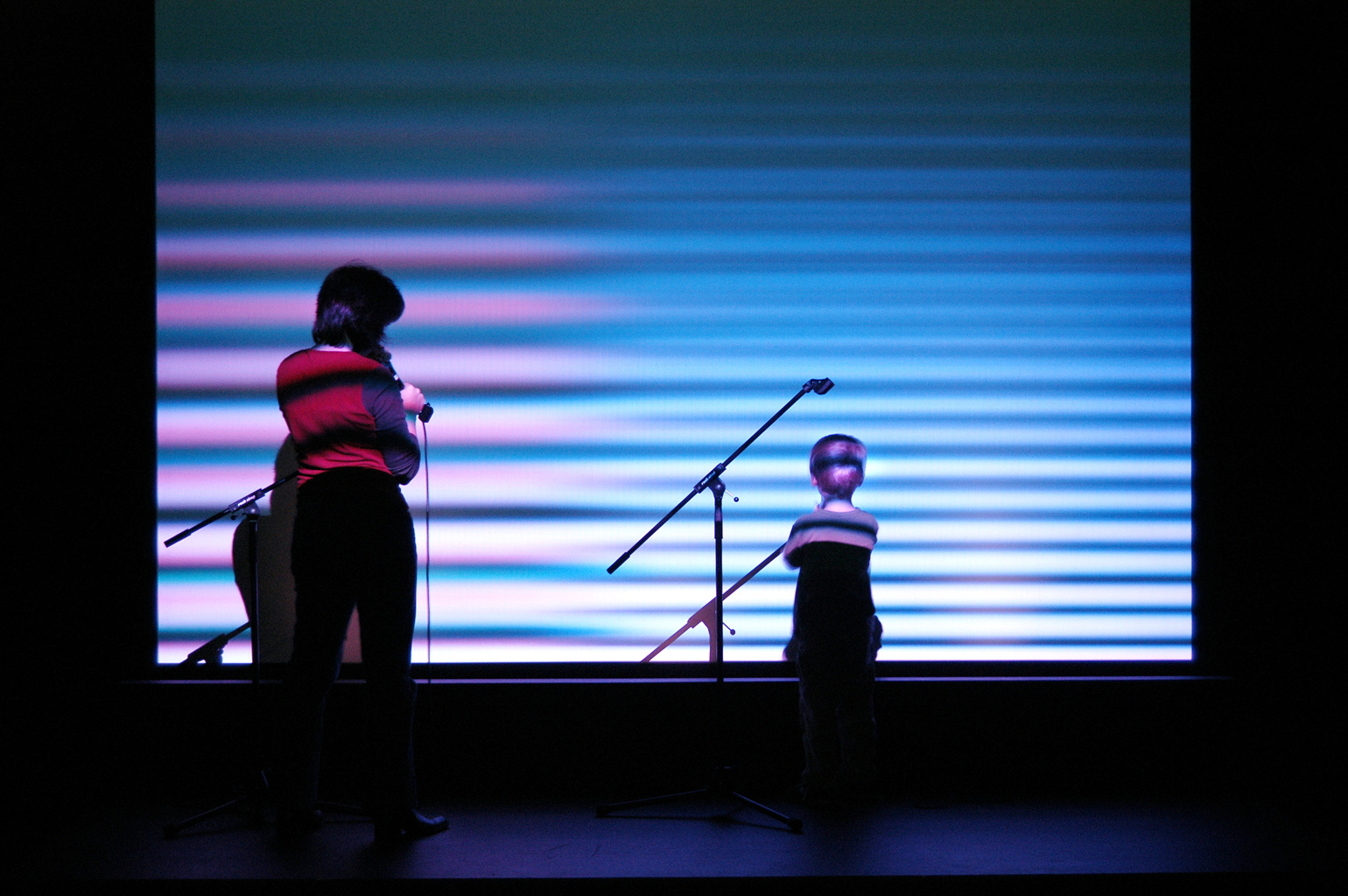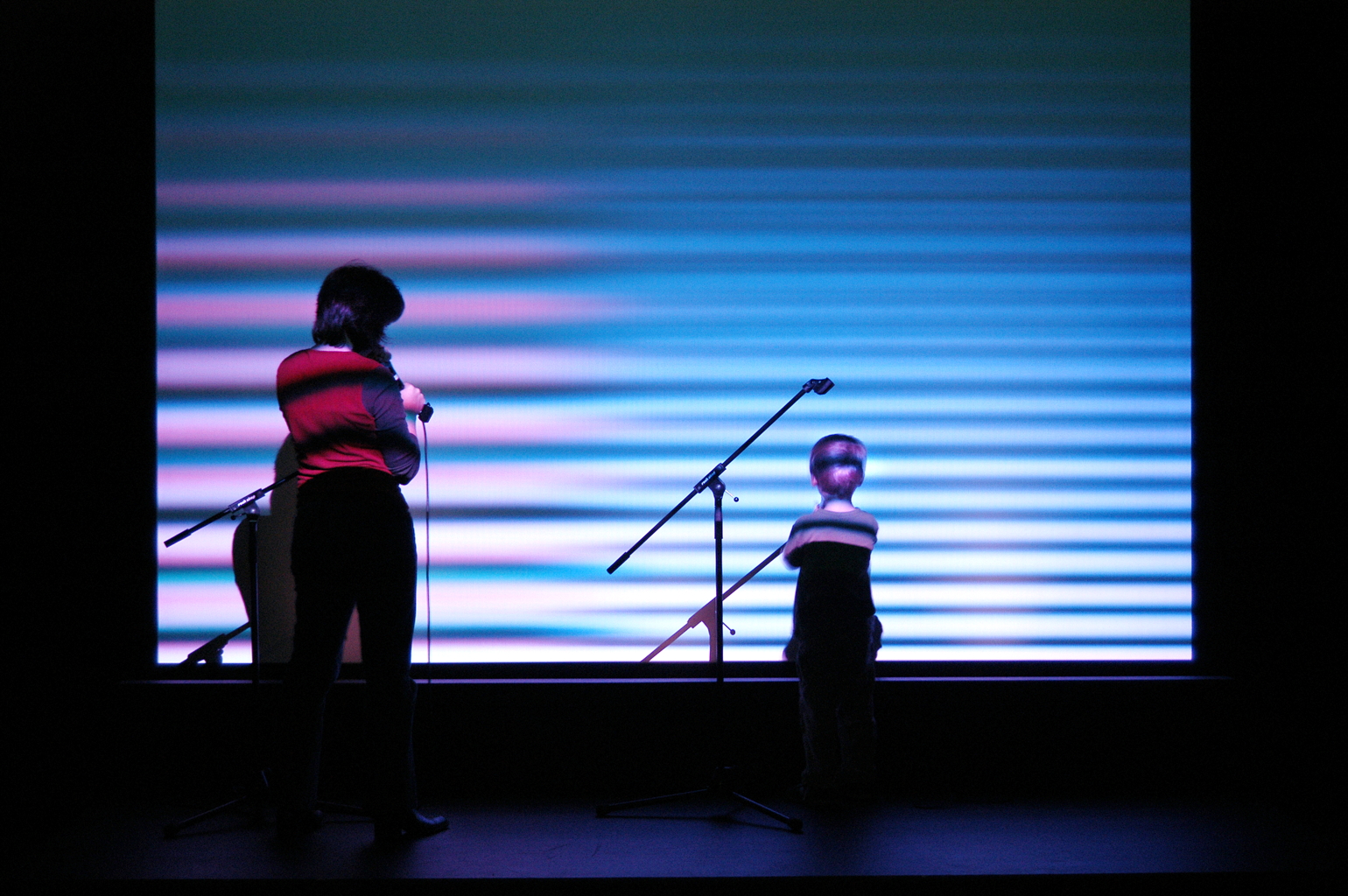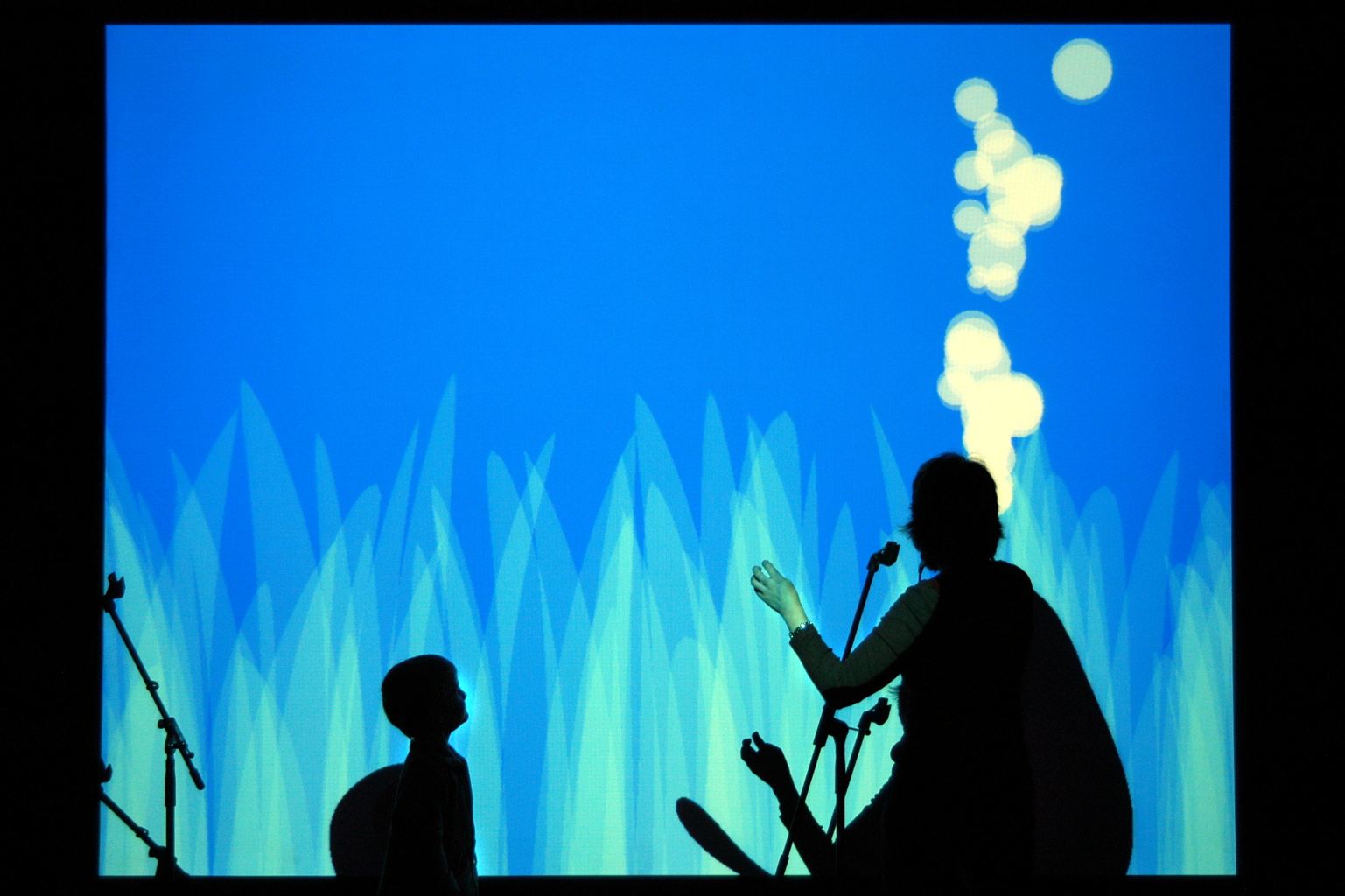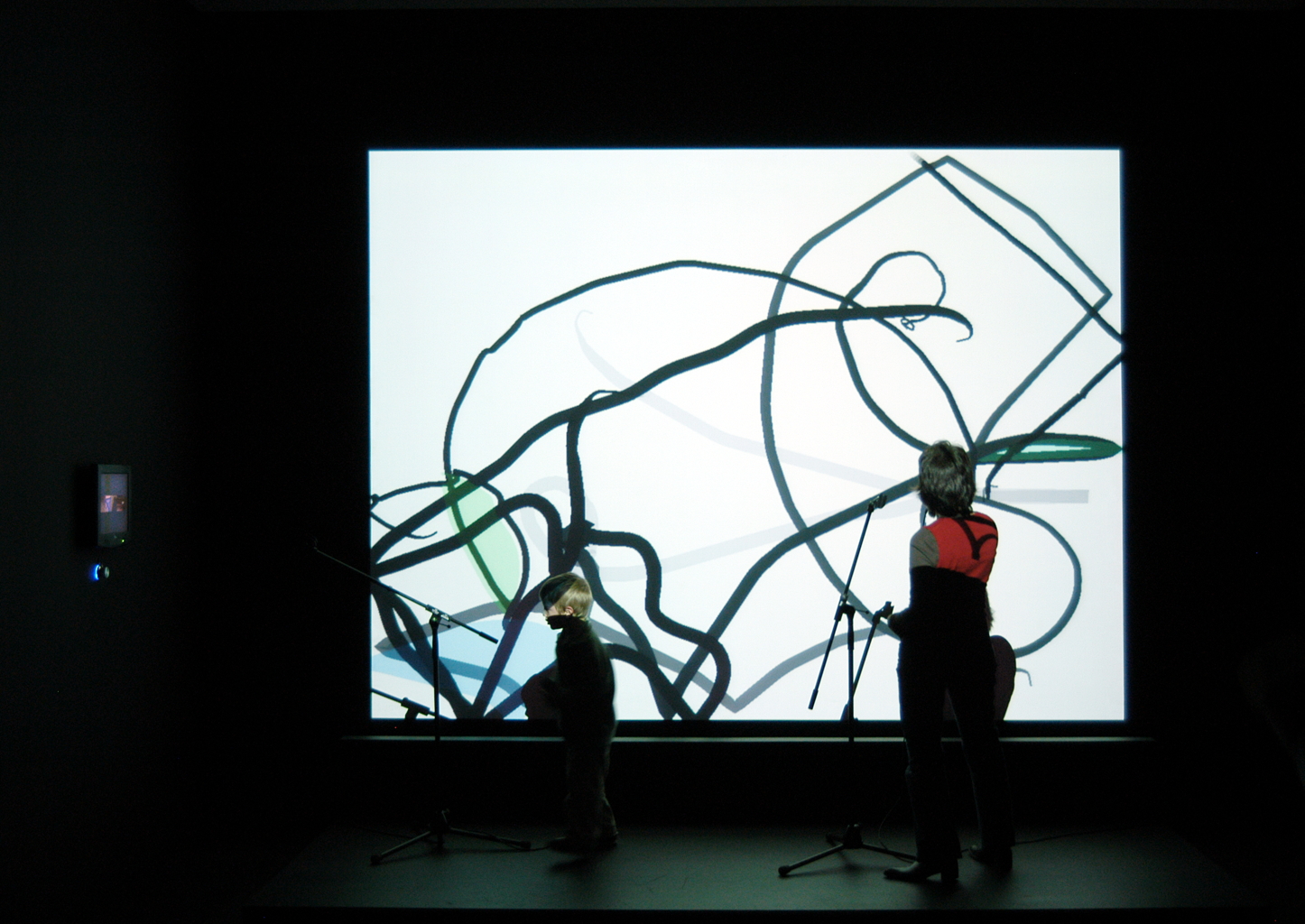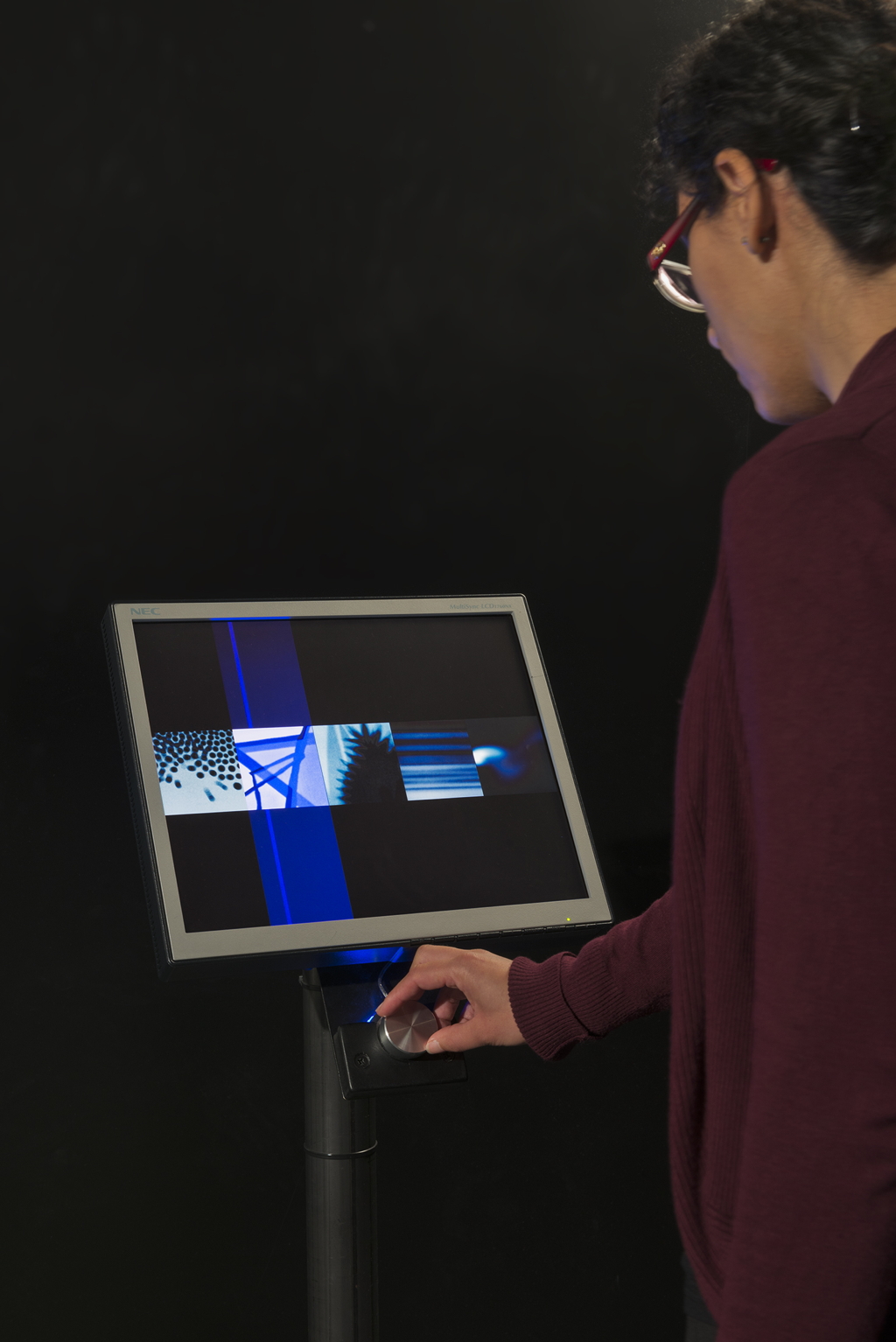Golan Levin, Zachary Lieberman
Messa di Voce
2003
- Artist / Artist group
- Golan Levin, Zachary Lieberman
- Title
- Messa di Voce
- Year
- 2003
- Category
- Installation
- Computer-based
- Format
- Sound Installation
- Video Installation
- Material / Technique
- purpose-built platform, computer (PC, operating system Windows XP, custom software, sound card: M-Audio Delta44, graphics card: Pinnacle PCTV Pro, graphics card: DualHead geForce 5600), interface (Griffin Powermate USB), TFT monitor, video camera (b/w with infrared lens filter), audio mixer, audio interface (M-Audio Delta Series), 2 microphones, 2 microphone stands, 3 infrared flood lights, projector. Documentation video: CF card player, video monitor or projector, speaker (active)
- Dimensions / Duration
- Installation dimensions variable
- Contributors
- Künstlerische Beratung
- Künstlerische Beratung
- Collection
- ZKM | Center for Art and Media
- Description
- “If we could see our speech, what might it look like?“ [1] (Levin, Lieberman, 2004) Golan Levin and Zachary Lieberman’s computer-based installation »Messa di Voce« translates language—specifically the sound of the human voice—into images. Noises and vocal sounds morph into 2D graphics via microphones: Every word and sound that visitors speak, scream, or sing into either microphone is transformed in real time into moving pictures projected onto the canvas. The visitor’s silhouette is also depicted there. They can use these virtual silhouettes to touch the visualized sounds and hence changing them. Levin and Lieberman worked with an interactive visualization software program for »Messa di Voce«. A computer records the audio signals captured by the microphone and analyzes pitch levels and spectral density of voice waveform. After processing the data, the computer generates different images, and the software also identifies the exact position of the visitor’s head. This motion tracking system makes the graphic projections seem to emerge directly from their mouths. Visitors can also select from five different visualized landscapes using a control panel. With this work, the artist duo make reference to an experiment by psychologist Wolfgang Köhler from 1927. The gestalt psychologist researched the link between graphic representations and sounds by asking study participants to match up geometrical shapes to made-up names like ’takete’ and ’maluma’. Discovering that different people often attributed the same nonexistent words to the same shapes, he concluded that particular sounds possess similar connotations for people, regardless of their age or culture of origin. Messa di Voce is a playful, participatory realization of this phenomenon of phonetic symbolism. [1] Golan Levin and Zachary Lieberman, »In Situ Speech Visualization in Real-Time Interactive Installation and Performance,« in Proceedings of the Third International Symposium on Non-Photorealistic Animation and Rendering, Annecy, France, 2004.
Author
Hannah-Maria
Winters
